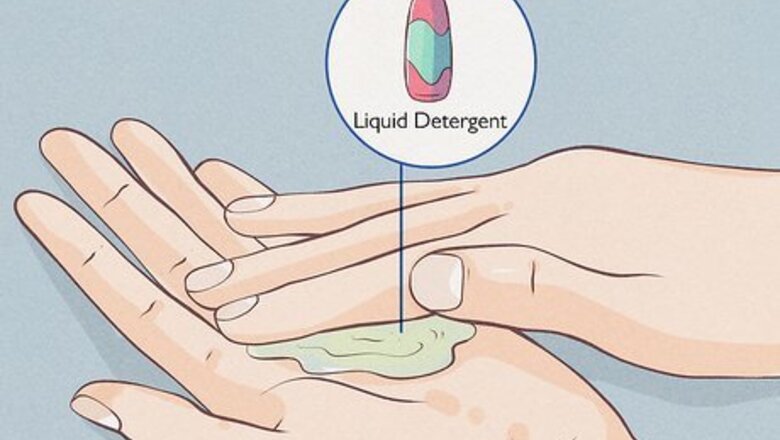
views
- Scrub off the dye with a mixture of warm water and liquid dish soap or laundry detergent. Add some rubbing alcohol to the mixture to help remove the stains.
- Try removing hair color with a mixture of equal parts baking soda and dish soap, which exfoliates the skin to lift the dye.
- For a gentler option, rub petroleum jelly or baby oil into the dye. Cover the area with a bandage and let it soak overnight, then wipe it off in the morning.
- As a last resort, use nail polish remover to get rid of hair dye stains on your skin. It’s best to use this method on your hands rather than your face since it’s pretty harsh.
Detergent or Soap
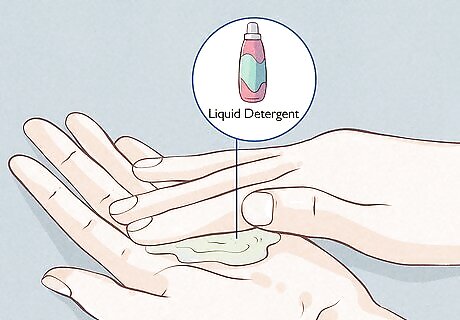
Apply a small amount of liquid detergent to the stain. Use your fingers to rub approximately 1 tsp (5 ml) of liquid dish or laundry detergent onto the dyed area of your skin. Mix a little rubbing alcohol into the soap to give it extra stain-fighting power. Use a detergent free of dyes and fragrances to avoid causing irritation to your skin. Keep the detergent away from your eyes. Note that this method may work best for your hands, rather than your face, since the skin on your face tends to be more sensitive and may react to the detergent. Use more or less detergent as needed to cover the dyed area.
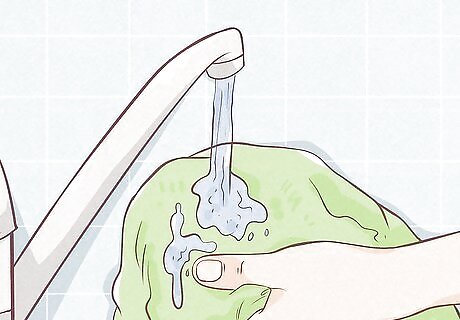
Wet the area with warm water. Soak a clean rag in warm water and dab the water onto the detergent and dye stain. You could also apply the water with your fingers, by running the area under your sink faucet, or with a soaked makeup remover pad.
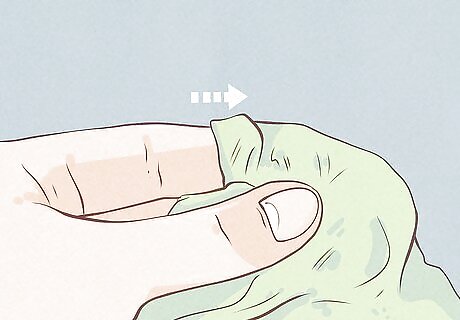
Scrub gently. Use a rag or cotton makeup remover pad to gently blot at the dye stain until it fades. Note that this only works with weaker dyes and may not be effective against strong dyes or dyes that have been left to soak on the skin for a prolonged period of time.
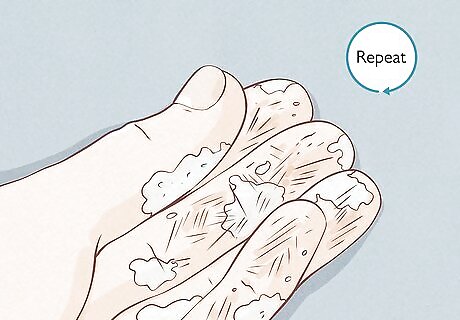
Repeat as needed. If the stain fades but does not completely disappear, you might be able to remove the rest with additional detergent. If the first round of detergent does not fade the dye at all, however, try moving on to another method of dye removal.
Baking Soda
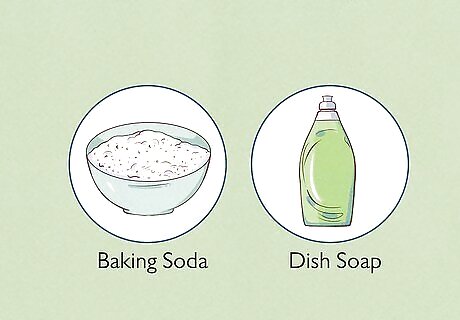
Combine equal parts baking soda and dish soap. Mix 2 tsp (10 ml) baking soda with 2 tsp (10 ml) liquid dish soap. Stir well until completely combined. The baking soda has an abrasive effect and scrubs off the dead skin cells stained with dye, revealing clean skin underneath. The soap attracts the dye molecules and cleans the skin by lifting the dye off. Use a mild detergent with no added fragrances or dyes, if possible, to reduce the risk of irritation. Do not apply near the eyes. This mixture is safest when used on areas other than the face.
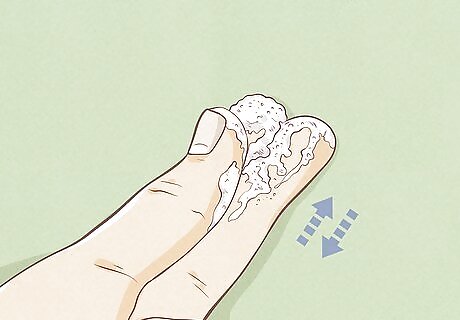
Rub the mixture onto the dyed skin. Use a cotton makeup remover pad to scrub the baking soda solution onto the dyed skin, applying it in a circular motion. Scrub the mixture over the dye using gentle pressure. Use as much or as little of the baking soda mixture as needed to coat the entire stained area of skin. Rub for 30 to 90 seconds. Stop if you feel any tingling, burning, itching, or other signs of irritation. You could also use a cotton ball or clean rag instead of a cotton pad.
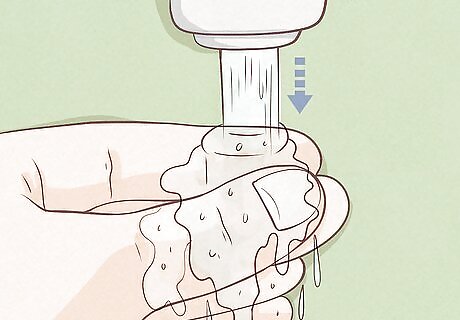
Rinse with warm water. After scrubbing the dyed skin with the baking soda, wipe the area clean with a damp washcloth. Then, rinse your skin thoroughly. You may find it easier to rinse the skin under running water. If you rinse the baking soda off with running water, gently rub the area with your fingers to loosen the baking soda under the water.
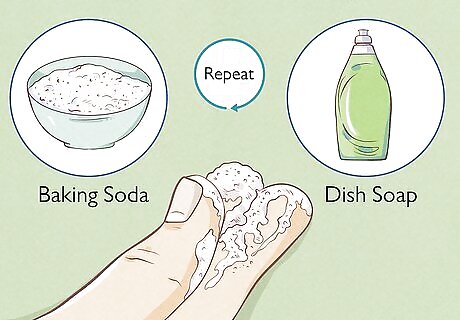
Repeat as needed. If the dye appears lighter but has not been completely removed, you may consider trying this method again. If this method had no effect on the dye, however, attempt a different one.
Toothpaste

Dab toothpaste onto the dye stain. Use your fingers or a clean toothbrush to apply a dot of toothpaste onto the dye on your skin. Spread the toothpaste out so that it covers the stained area evenly. Only use as much toothpaste as needed in order to create a thin coat of paste over the stain. Toothpaste can be used on dye skins around the face as well as those on the hands. Toothpaste is a mild abrasive and can actually scrape off dead skin cells stained with dye. Any toothpaste will work, but a non-gel formula with baking soda in it may work even better than others since it has larger granules.
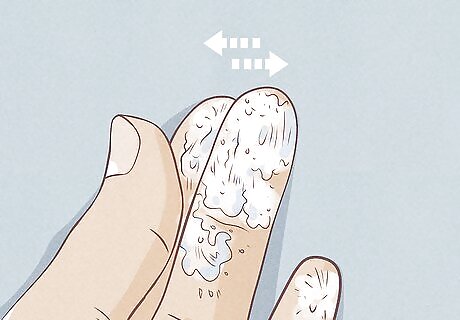
Rub the toothpaste gently into the stain for 30 to 60 seconds. Use a cotton ball, cotton makeup remover pad, or a clean toothbrush to gently rub the toothpaste over the dyed area of skin for up to a minute, massaging it in using a circular motion. Note that you can also use your fingertips to massage the toothpaste into the dye.
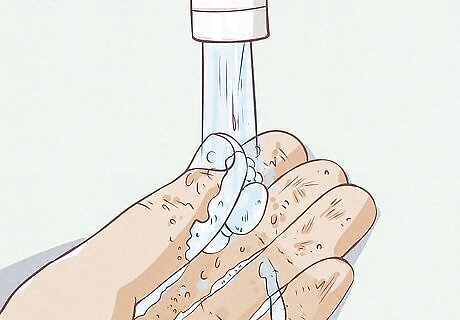
Rinse with lukewarm water. After scrubbing the area with toothpaste, gently rinse it with warm water until no traces of toothpaste remain. You may need to rub the toothpaste off while rinsing it by using your hands or a clean washcloth.
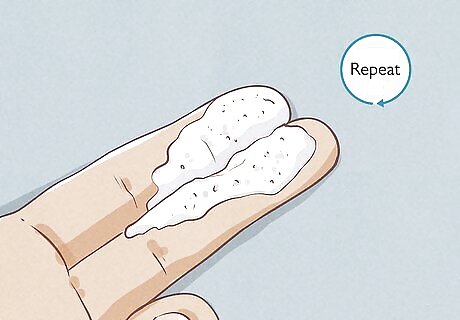
Repeat if needed. If the dye has faded but has not disappeared completely, you can try to use additional toothpaste to remove the rest. If the toothpaste proved ineffective, though, move on and try another method of hair dye removal.
Petroleum Jelly
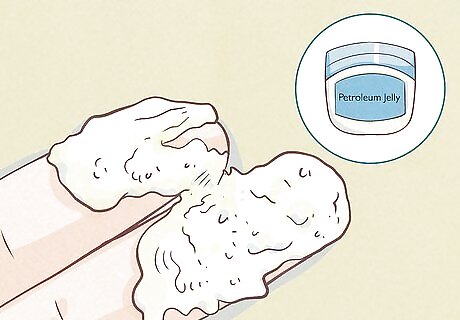
Rub petroleum jelly onto the stain. Dab petroleum jelly onto your skin and massage it into the dye stain using a circular motion. Continue rubbing until you notice the stain starting to wear off. Petroleum jelly is safe to use on your face and hands, but avoid getting it in your eyes. You can use your fingers to rub the petroleum jelly onto the dye stain, but a cotton ball or cotton pad may work better since the dye may accidentally transfer onto your fingers if you bring them into direct contact with the dye. If the petroleum jelly soaks into the cotton, though, use your fingers.

Wipe it off with a clean rag. After the dye begins to tint the petroleum jelly, use a clean rag or cotton pad to wipe the petroleum jelly off your skin. If the stain has been lightened but some dye still remains, continue on with the remaining steps.
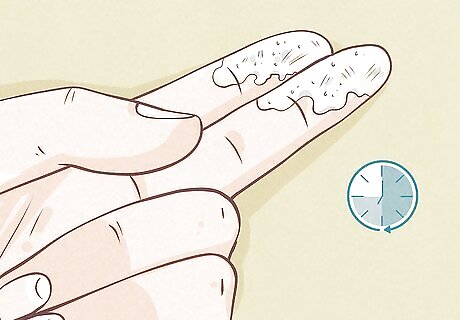
Apply petroleum jelly onto the stain and let it sit. Use a cotton pad or your fingers to apply a thin coat of petroleum jelly over the dyed area of skin. Allow the petroleum jelly to sit on the stain overnight. If you are worried about the dye rubbing off onto your bedsheets in the middle of the night, cover the area with breathable cotton bandages. Alternatively, if the stain is on your hands, you can cover them with cotton gloves as the petroleum jelly sits.
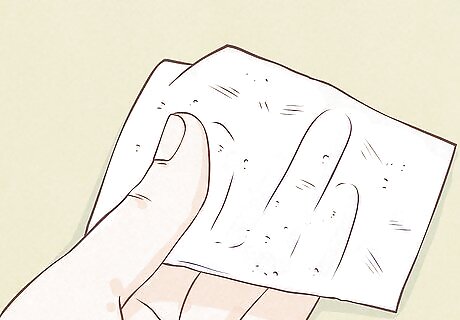
Wipe it off in the morning. Use a clean, wet rag to wipe the petroleum jelly and remaining dye off your skin, scrubbing gently as you wipe it off. If more dye remains even after this, try another dye removal method.
Baby Oil
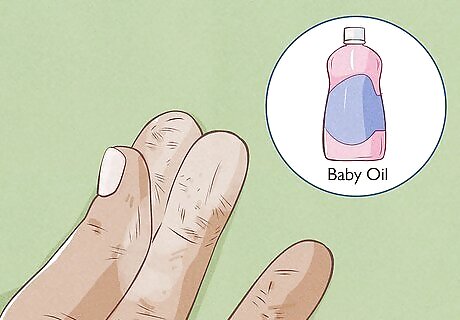
Rub a generous coat of baby oil over the stain. Use your fingers to apply a coat of baby oil over the dyed skin. Alternatively, try another oil, like olive. You can also apply the oil using a cotton ball, cotton pad, or clean rag. Apply enough oil to coat the stained skin but do not apply so much oil that it drips over other areas of your skin. Baby oil is safe to use on both your face and hands, but avoid getting it into your eyes.
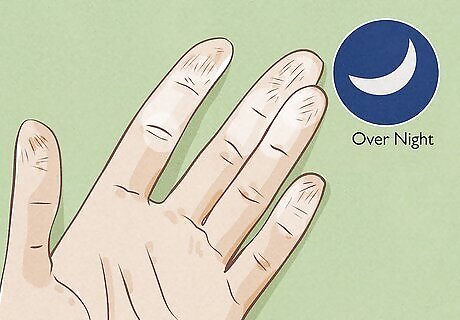
Let it sit overnight. Let the baby oil sit on your skin for 8 hours or overnight. If you are concerned about the oil soaking into your pillowcase or bedsheets, cover it with clean cotton bandages. If applying it to your hands, you can cover them with cotton gloves overnight. Opt for coverings made from a breathable material, like cotton, over those made from plastic.
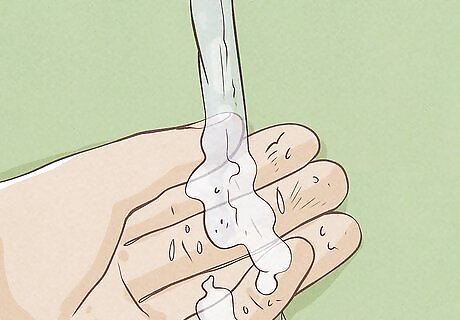
Rinse with warm water the following day. Rinse the area under running, lukewarm water, scrubbing gently with your fingers or a cotton ball. You may need to use a little soap or shampoo to remove the oil from your skin. The dye should wash off with the oil. If it does not do so, you may need to try another method of dye removal.
Nail Polish Remover

Soak a cotton ball in nail polish remover. Soak a cotton ball or cotton pad in an acetone-based nail polish remover. Wring slightly by squeezing it with your fingers to remove any excess. The acetone in nail polish remover can be very abrasive and will remove the dyed, dead skin cells on top of your skin while also lifting up the dye. Keep the nail polish remover away from your eyes. Note that this method is risky to use with the sensitive skin of your face and may work better for hair dye stains on your hands.
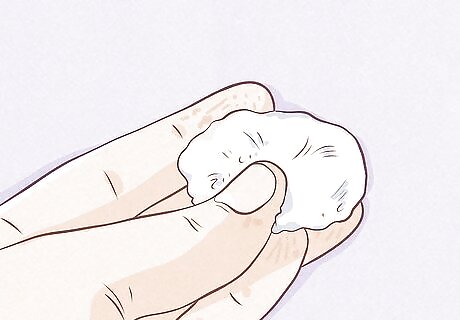
Rub the area with the nail polish remover several times. Gently rub the soaked cotton ball over the stained skin. Only rub the area a few times. Do not scrub and do not let the acetone soak your skin for long. You should notice the dye lifting up almost immediately. If it does not, then nail polish remover may not work against your brand of hair dye.
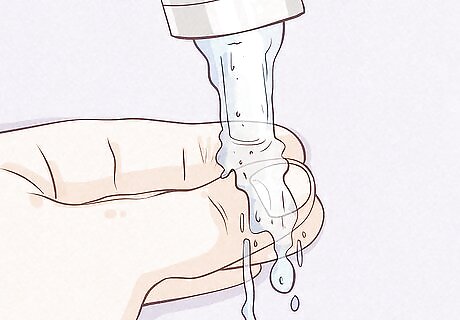
Wash and rinse the area. Thoroughly wash the area with warm, soapy water to remove all of the dye and nail polish remover. Then, rinse the area with water.



















Comments
0 comment